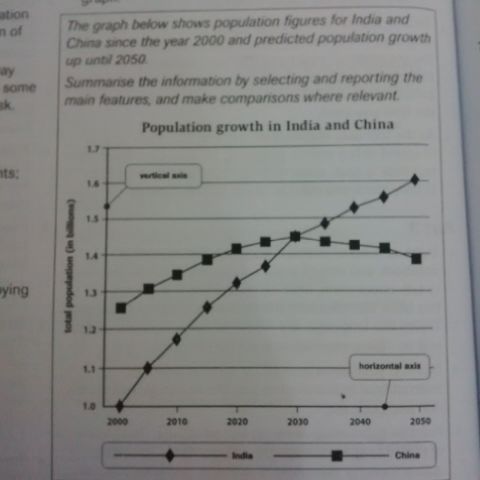The number of inhabitants in India and China since 2000 and prediction of population growth in fifty years later are revealed in the graph. Overall, it can be seen that at the beginning, Indians were much fewer than Chinese totally, yet the number of both increased steadily until they will reach the same population in 2030. After this, the China's citizens will experience a decline, while the rate of people in any other country will go up sharply.
In 2000, the figures of Indians were as not high as the total inhabitants in China. They stood at 1 and 1.2 billion respectively. Then, both of lines went up significantly of almost 0.2 billion. Further, even though the population in these countries increased continuously, a rise which was experienced by the number of China's people was smaller than population of India.
Moreover, the inhabitants of these countries will have the same population in 2030. It will be represented at 1.45 billion. Afterwards, the number of Indian will incline, while the total of Chinese will decline. 1.6 billion people will stay in India, whereas China will have just under 1.4 billion citizens.
In 2000, the figures of Indians were as not high as the total inhabitants in China. They stood at 1 and 1.2 billion respectively. Then, both of lines went up significantly of almost 0.2 billion. Further, even though the population in these countries increased continuously, a rise which was experienced by the number of China's people was smaller than population of India.
Moreover, the inhabitants of these countries will have the same population in 2030. It will be represented at 1.45 billion. Afterwards, the number of Indian will incline, while the total of Chinese will decline. 1.6 billion people will stay in India, whereas China will have just under 1.4 billion citizens.

IMG_20151113_123432..jpg
